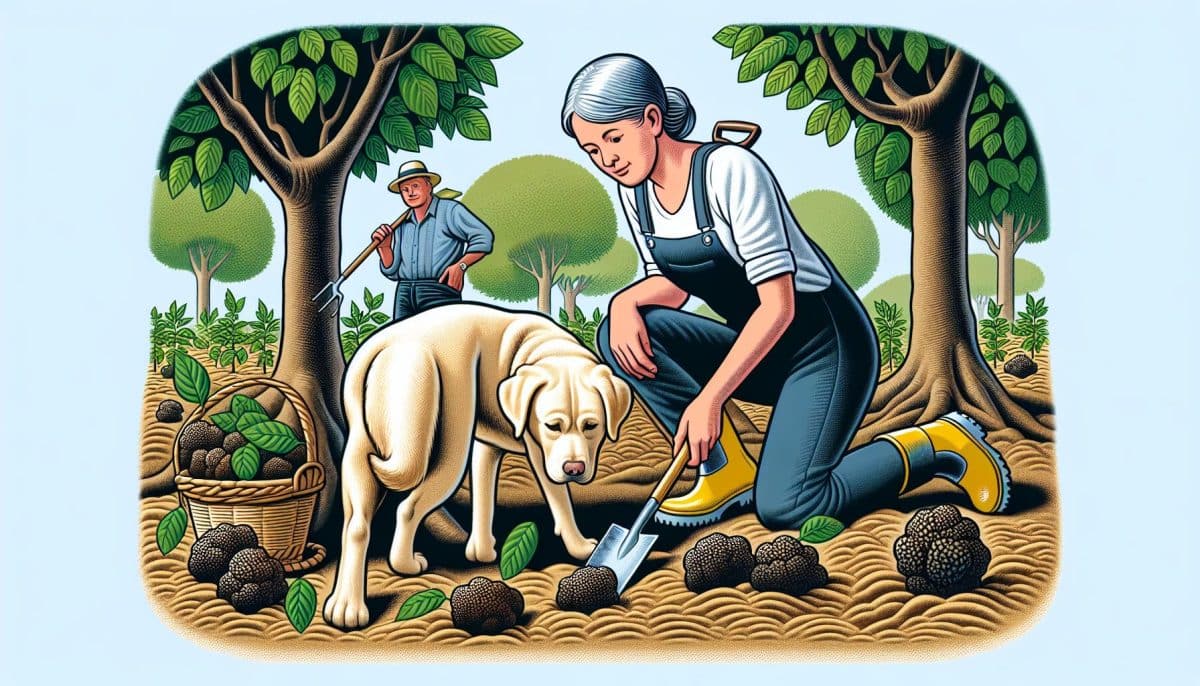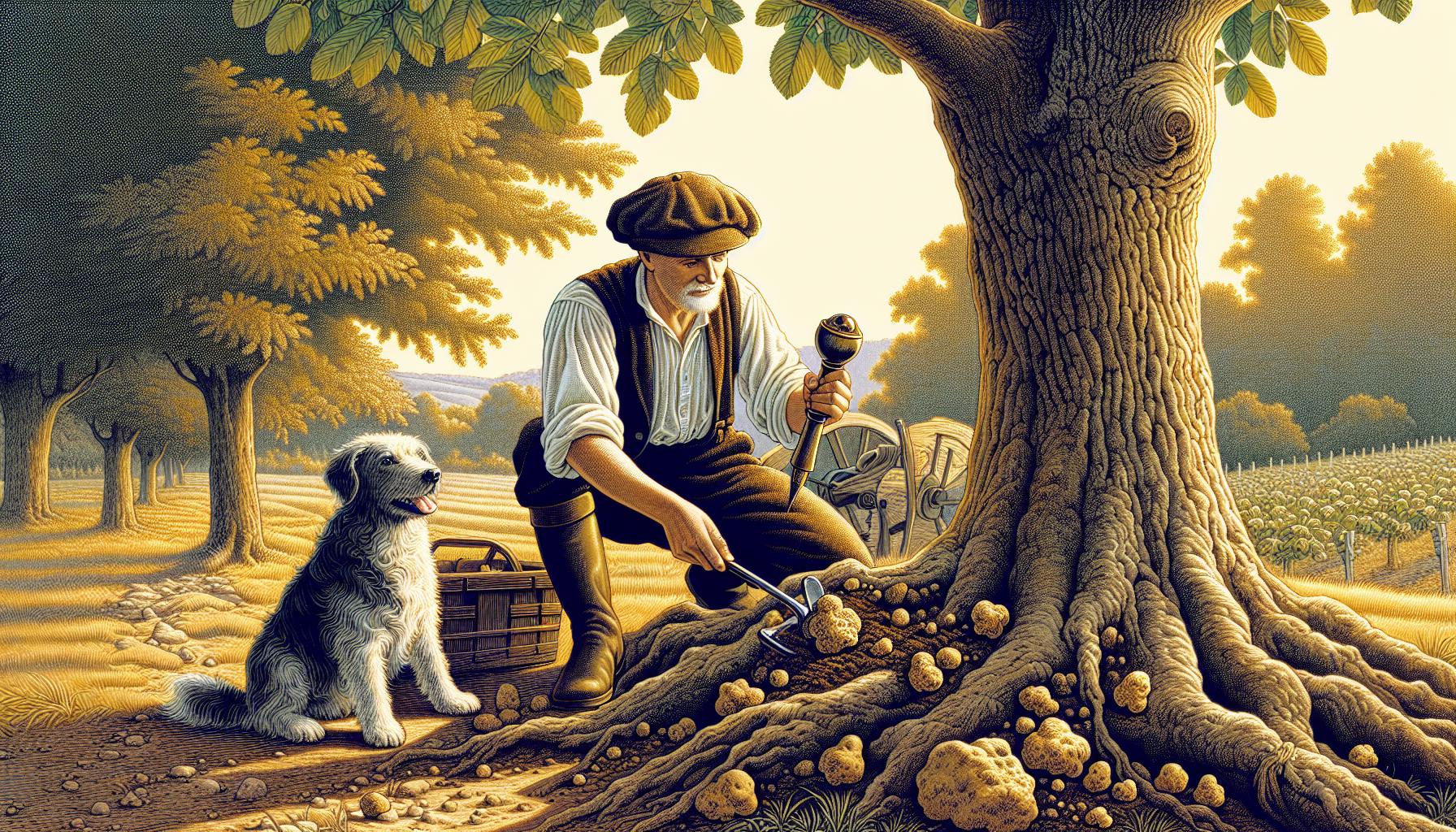
Ever wondered if you could cultivate the elusive and expensive truffles in your own backyard? Growing truffles at home is indeed possible, but it requires patience and the right conditions. Truffles are the diamonds of the culinary world, and with a bit of know-how, you can start your journey into truffle farming. You’ll need to understand the symbiotic relationship between truffle spores and host trees to successfully grow these gourmet fungi. It’s a long-term commitment, but the reward of harvesting your own truffles could be well worth the wait. Let’s investigate into what it takes to bring the truffle hunt to your garden.
Understanding Truffles
Growing truffles at home starts with a solid grasp of what truffles are and how they thrive. Truffles are a type of fungal delicacy that form beneath the surface of the soil, usually in close association with the roots of certain trees, such as oak and hazel. Unlike plants, truffles do not photosynthesise; they require a host tree to provide the necessary nutrients through a symbiotic relationship.
This subterranean species is part of the Tuber genus, with numerous varieties, including the prized black Perigord truffle and the illustrious white Alba truffle. The conditions for cultivating each type can vary, making some truffles easier to grow at home than others. A critical factor in truffle cultivation is the soil. It must be well-drained, calcareous and alkaline with a pH between 7.5 to 8.3. You’ll also need to ensure the presence of inoculated seedlings, which are young trees that have been deliberately exposed to truffle spores to initiate the essential symbiotic relationship.
Climate is equally important, as truffles demand a very particular set of weather conditions to flourish. The amount and timing of rainfall, the warmth of the summer, and the coolness of the winter months all contribute to the successful development of truffle mycelium and the eventual truffle fruiting bodies.
Real-Life Implications
Case studies have shown that dedicated enthusiasts who meet these criteria can indeed cultivate truffles in their backyards. For instance, a family in the UK managed to harvest their first black Perigord truffles after patiently tending to their inoculated hazel trees for seven years. This demonstrates that with the right approach and conditions, growing truffles at home is more than a mere possibility—it’s an achievable goal.
Keep in mind, while the establishment phase is a slow process, the meticulous care you provide can eventually lead to a sustainable and potentially profitable truffle orchard right on your property.
The Right Conditions for Truffle Growing

Growing truffles at home isn’t just about planting a tree and waiting for the truffles to appear. It’s a fine art, requiring specific conditions to mimic the truffle’s natural environment. Here’s what you need to foster a successful truffle orchard.
Optimal Soil Composition
The soil is the foundation of truffle cultivation. Truffles thrive in well-drained, alkaline soils with a pH of 7.9 to 8.3. You’ll want to incorporate plenty of calcium into your soil as truffles have a particular fondness for this nutrient.
- Conduct a soil test
- Amend with limestone to adjust pH
- Ensure adequate soil aeration
Climate and Temperature
Truffles require a certain kind of climate to flourish. Moderate temperatures and occasional rainfall are crucial, with cold winters to help induce dormancy and warm summers to promote growth.
- Average temperatures: º15-20C (º59-68F) in the growing season
- Minimal frost occurrences
- Consistent, but not excessive, rainfall
Tree Host Selection
Truffles form a symbiotic relationship with the roots of certain trees. Your choice of tree is pivotal.
- Oak and Hazel are common hosts
- Ensure trees are inoculated with truffle spores
- Young trees are preferable for establishing a new orchard
By mirroring these conditions, you pave the way for potentially lucrative truffle harvests in the long run. Your success, like the family in the UK, hinges on your patience and ability to provide the optimal environment for truffle production. Remember, each factor plays a significant role in the complex process that leads to the growth of these valuable fungi.
The Symbiotic Relationship Between Truffle Spores and Host Trees

Understanding the symbiotic relationship between truffle spores and host trees is crucial for anyone looking to cultivate truffles at home. Truffles thrive when their delicate relationship with certain trees is meticulously maintained. Here, you’ll learn exactly how truffles interact with their hosts to benefit both parties.
Truffles form a mutualistic bond with tree roots, where both organisms benefit from the association. Truffle spores attach to the roots of host trees and develop into a network known as mycorrhiza. This association allows the truffles to access the carbohydrates produced through the tree’s photosynthesis process. In return, the truffles enhance the tree’s uptake of water and essential minerals from the soil.
- Key Benefits to Trees: – Increased nutrient absorption – Better water uptake during dry periods – Enhanced resistance to pathogenic infections
- Key Benefits to Truffles: – Access to sugars like glucose and fructose – Stable environment for growth – Symbiosis facilitating spore dispersal
Real-life examples demonstrate the effectiveness of this relationship. Consider the European Périgord truffle, which has a prosperous mutualistic relationship with the roots of hazel and oak trees in natural habitats. Copying these conditions at home requires finding the right tree species, like the aforementioned oak or hazel, that are hospitable to truffle spores.
To replicate this natural process at home, trees must be inoculated with truffle spores. You can purchase tree saplings that have been pre-inoculated. These specialized trees are the launching pad for successful truffle cultivation, as they kickstart the symbiotic relationship essential for truffle development.
Getting Started with Truffle Farming

When venturing into the world of truffle cultivation, selecting the appropriate host trees is crucial for your success. Begin by choosing hearty species like oaks and hazelnuts, which have proven effective partners for truffle production.
Choose the Right Saplings
Find saplings that are already inoculated with truffle spores, typically available from reputable suppliers. This ensures a strong start to the symbiotic relationship required for truffle growth.
- Go for young trees
- Ensure they’re from a certified supplier
Prepare Your Soil
Truffles demand calcium-rich, well-drained soil with a pH of 7.5 to 8.3. Conducting a soil test beforehand lets you adjust the conditions to meet these requirements. – Lime your soil if necessary
- Ensure proper drainage
- Keep the area weed-free
Remember to monitor your truffles’ environment for pest disturbances or changes in soil composition that might affect growth. Implementing protective measures and maintaining consistent conditions are key to fostering a successful truffle farm right in your backyard.
Harvesting Your Own Truffles

Once you’ve invested the time and resources into cultivating your own truffle farm, the anticipation of harvesting yields a unique excitement. Harvesting truffles is a delicate process, and it’s critical to know when and how to unearth these valuable fungi to maximise your success.
Truffles reach maturity approximately 4 to 6 years after the host trees have been planted. It’s crucial to monitor the development of the truffles regularly. You’ll know your truffles are ready to be harvested when you notice a distinctive aroma near the base of the host trees. This scent is an indicator that the truffles have developed their full flavour and are at peak maturity.
- Utilise a trained dog or, in traditional farming, a pig to sniff out the ripe truffles. Their excellent sense of smell makes them indispensable for finding truffles without damaging the delicate mycelium.
- Carefully excavate the area around the truffle to avoid bruising. Gently lift the truffle from the soil with your hands or a small tool.
- Timing is everything—harvest in the cooler parts of the day, preferably morning, to ensure the truffles aren’t exposed to heat.
Remember, regular soil monitoring is as important during the harvest season as it is during the growing season. The collection of truffles is not merely about reaping the fruits but also ensuring that the environment remains conducive for future crops.
Harvest yields can vary greatly depending on the age of your trees, the suitability of the soil, and the climate. Experienced farmers typically expect to find between 30 to 300 grams of truffles per tree. After a successful harvest, it’s important to store your truffles properly; they should be kept in a cool, dry place and consumed within a few days for optimal flavour and texture.
Conclusion
Embarking on the truffle-growing journey at home is indeed a long-term commitment that pays off with patience and careful attention to detail. You’ve learned that with the right conditions and a bit of expertise you can cultivate these culinary treasures in your own backyard. Remember to stay vigilant during the crucial harvest period and handle your bounty with care. The rewards of your labour—a fresh, aromatic truffle—can elevate your home cooking to gourmet heights. So why not give it a try? Your future self, and your taste buds, will thank you.
Colin Macmillan is a seasoned entrepreneur and the CEO of Riverwood Landscape, a leading landscaping company based in Canada. He has been at the helm of the company since leaving high school, demonstrating his strong leadership skills and business acumen.
Colin’s expertise lies in various aspects of landscaping, including lawn care, interlocking, sod installation, and commercial maintenance. His hands-on approach and dedication to the craft have been instrumental in building Riverwood Landscape into a reputable brand.
One of his most notable achievements is the creation of a successful landscape franchise that services multiple locations. This accomplishment underscores his strategic thinking and ability to scale operations effectively.
Colin has also had the privilege of working with Guelph Hospital for landscaping and maintenance, a testament to the trust and reliability that his company has earned over the years.
His professional mission is to offer the best services and experiences for customers, a goal that he tirelessly pursues. Colin’s commitment to excellence and customer satisfaction continues to drive the growth and success of Riverwood Landscape.








